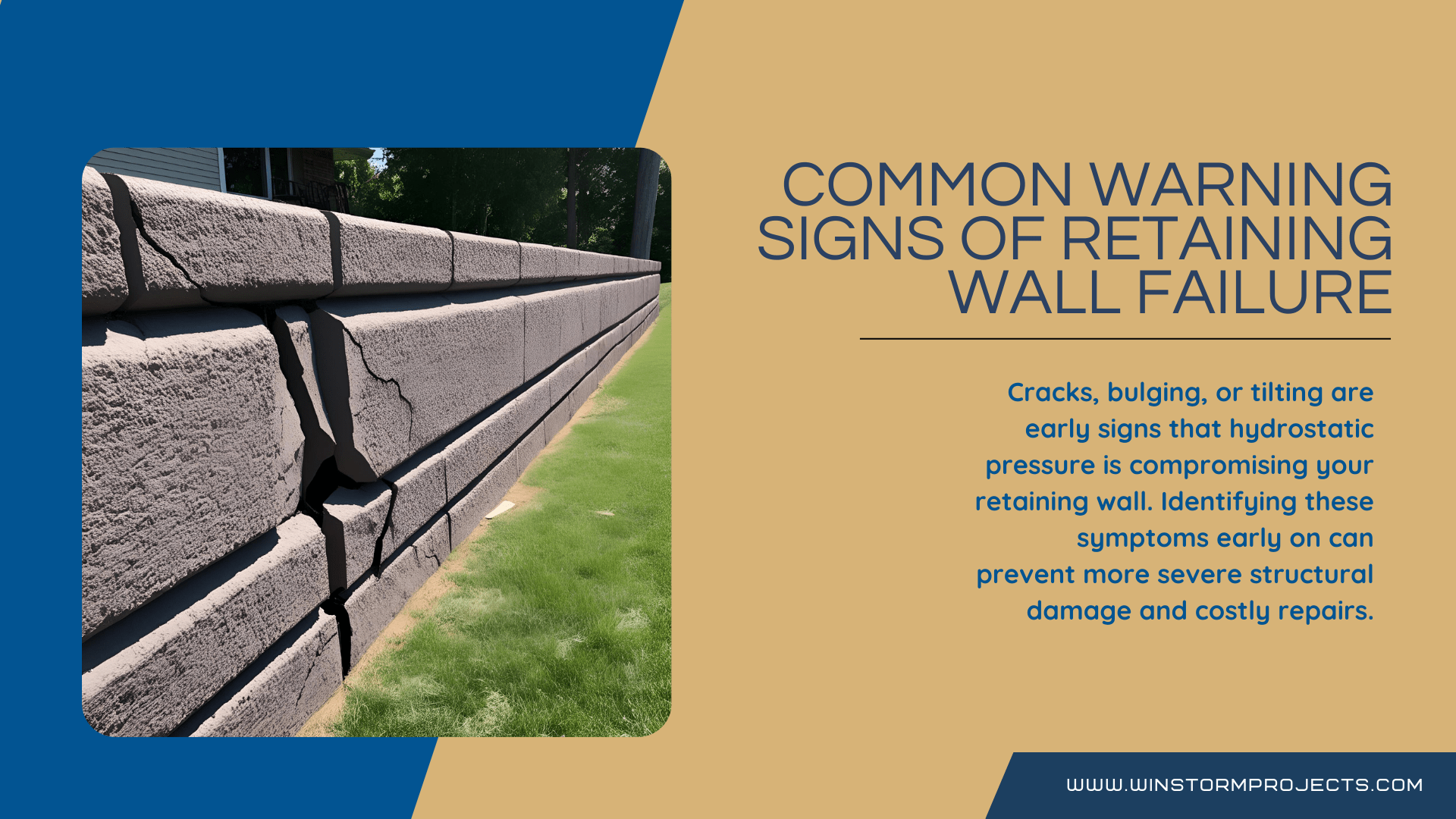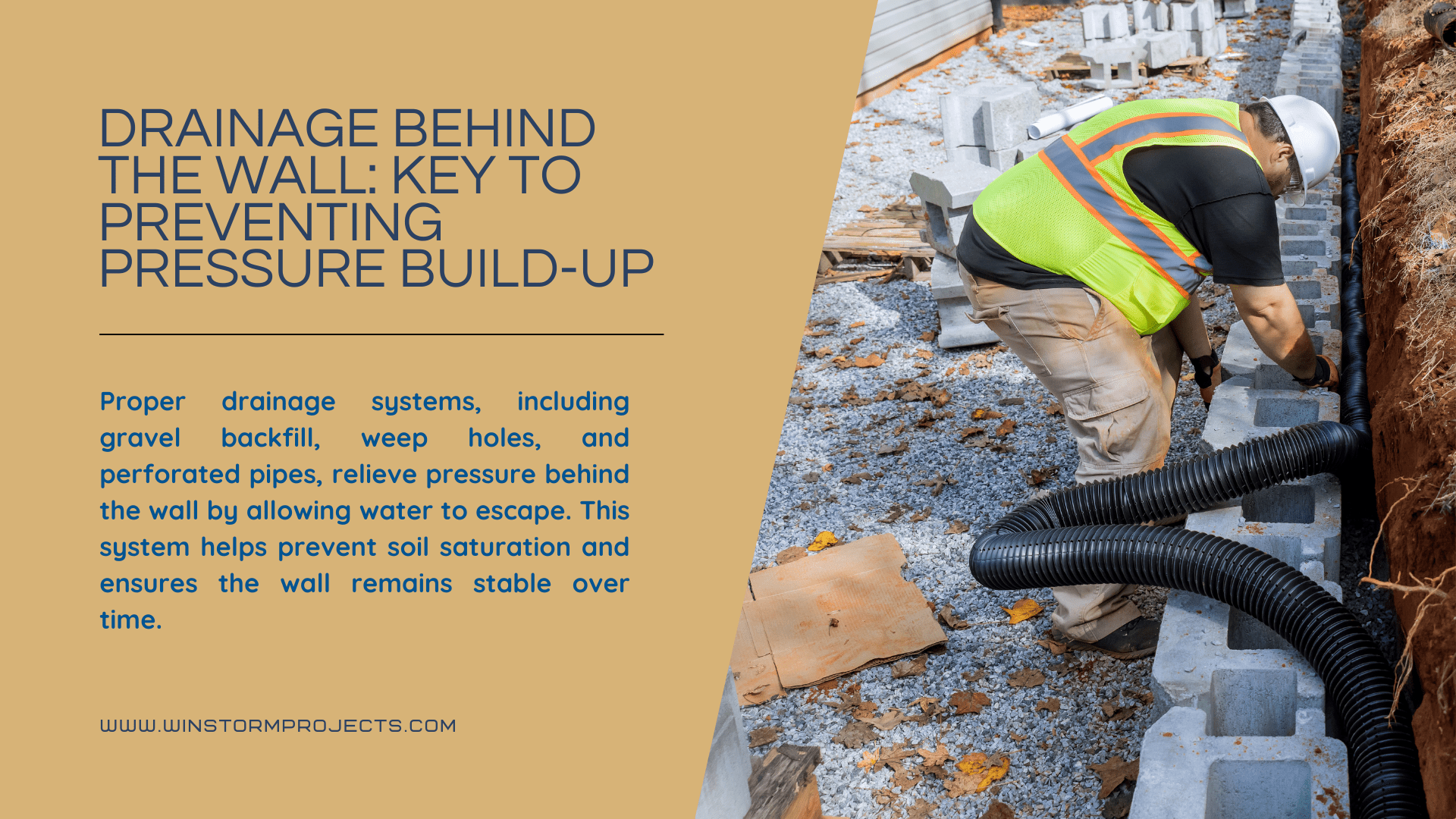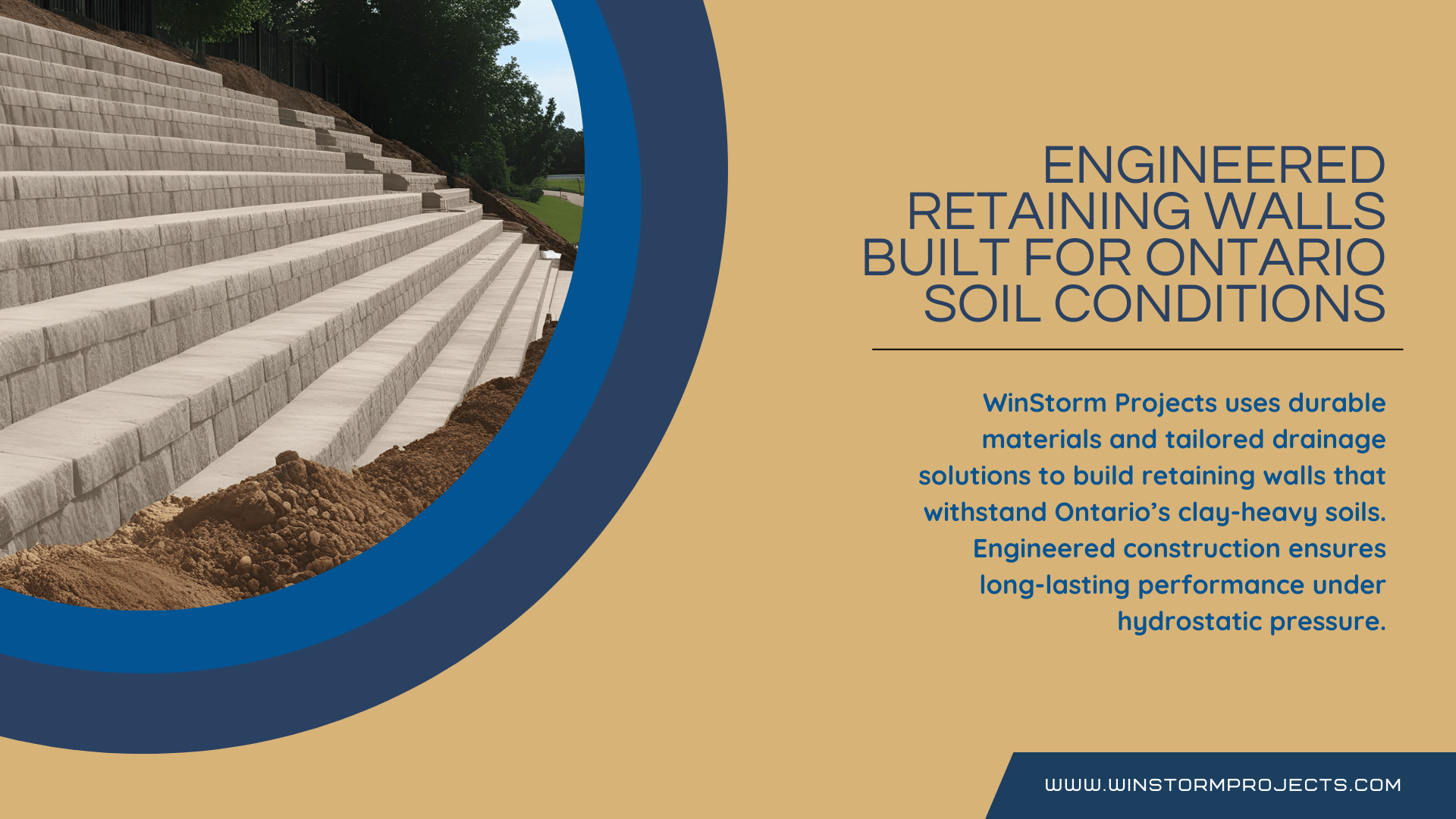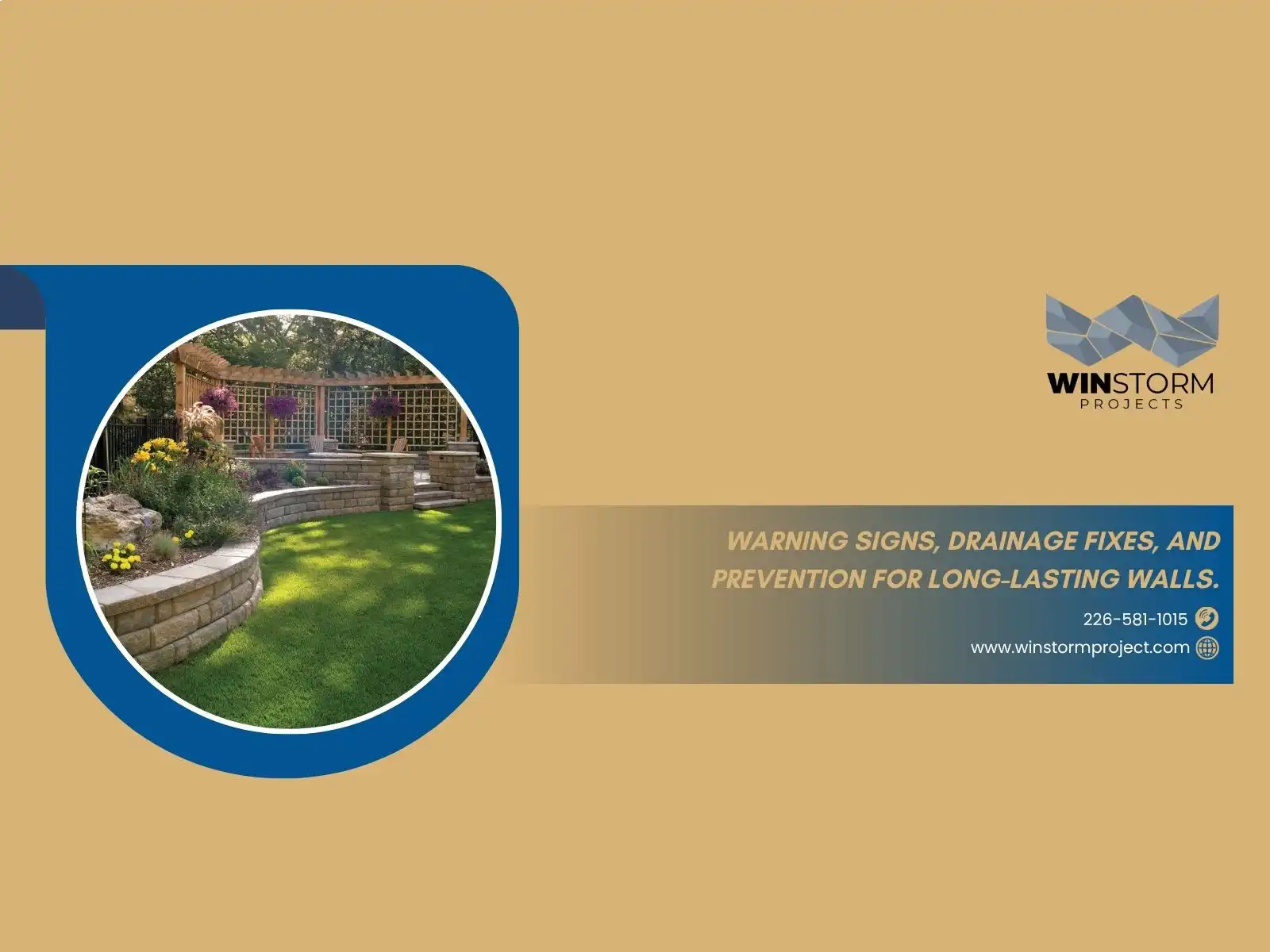When we think about outdoor stability, retaining walls are often front and center. They help manage hydrostatic pressure, reduce soil erosion, and maintain the structure of landscapes, especially on sloped terrain. These walls don’t just support the soil—they also defend our homes and yards from water-related damage caused by groundwater buildup.
But what exactly causes a retaining wall to fail? And how can smart retaining wall construction prevent it? In this post, we’ll explain the role of hydrostatic pressure, common red flags that a wall is under stress, and how proper drainage systems make all the difference. Let’s dive into the most common causes of wall failure and how to stop them before they start.
What Is Hydrostatic Pressure and Why Does It Matter?
Hydrostatic pressure is the force that water exerts as it builds up behind a structure. When water seeps into the soil behind the wall, it adds extra weight and pushes laterally against the structure. Over time, this can lead to cracks, bulging, or even a complete retaining wall failure.
In areas with clay-heavy soil, this pressure can become even more intense. Clay retains water, making it harder for moisture to escape and increasing the risk of water buildup. Without proper drainage, water continues to build behind the wall, creating a serious threat to your landscape and foundation.
Can Retaining Walls Really Fail? (And What to Watch For)
Absolutely. Even the strongest retaining wall can fail if it’s not properly designed, built, or maintained. Here are the signs to keep an eye on:

Early Warning Signs
- Bulging or tilting walls are often the first indicators of excess pressure behind the wall.
- Cracks near the base or top of the wall suggest shifting or uneven stress on the structure.
- Water seeping through or between blocks often points to a failed or missing drainage system.
Structural Damage from Neglect
- Collapsed sections typically result from long-term exposure to hydrostatic pressure without a way to relieve it.
- Undermined footing caused by erosion or poor compaction makes the wall vulnerable to sliding or settling.
- Displaced materials—like bowing timbers or shifted concrete blocks—indicate lateral forces have compromised the wall’s stability.
In all these cases, the pressure behind the wall can be traced back to improper design or lack of maintenance. Regular inspections and professional support can help you catch these problems early and avoid costly repairs.
How Proper Drainage Prevents Wall Failure

One of the most common causes of wall failure is poor drainage. When water accumulates behind a wall, it exerts extra force that can quickly lead to cracks, bowing, or even collapse.
Drainage Design: What’s Behind the Wall Matters
Effective retaining wall construction always includes a drainage system. Here’s what that typically looks like:
- Gravel backfill helps water move freely rather than saturating the soil.
- Weep holes allow water to escape through the wall, alleviating hydrostatic pressure.
- A perforated pipe behind the wall, also called a weeping tile, directs excess water away from the base of the wall and prevents water infiltration.
This setup allows water to flow away from the wall, reducing lateral pressure and extending the wall’s longevity.
Drainage Solutions That Work
Beyond what’s directly behind the wall, a complete drainage plan includes:
- French drains to redirect water across the property.
- Downspout extensions that move stormwater away from structural areas.
- Slope adjustments to guide surface runoff away from the wall.
These solutions work together to relieve pressure and preserve both the structure and the surrounding landscape.
Engineered Retaining Walls: Built to Last
An engineered retaining wall is designed to hold back not only soil but also water. At WinStorm, we specialize in retaining wall construction that withstands Ontario’s unique challenges, including heavy clay soil and frequent freeze-thaw cycles.
WinStorm’s Approach to Hardscaping

We use high-performance materials like Grande Wall stone, Armour Stone, and pressure-treated wood, chosen based on your slope, type of soil, and aesthetic preferences. Each wall is custom-built with:
- Reinforced drainage layers
- Proper backfill soil
- Compacted base and footing
- Materials that resist weathering and moisture intrusion
By integrating effective drainage into every design, we build retaining walls that last—without sagging, cracking, or shifting.
Why DIY or Budget Walls Often Fail
Thinking of installing a retaining wall yourself? You might want to reconsider.
Common Problems with DIY Walls
- No drainage system or backfill
- Poor compaction at the base
- Cheap or inappropriate construction materials
- Lack of understanding around lateral pressure or soil retention
While DIY walls might look fine at first, many fail due to hydrostatic pressure in just a few seasons. That’s why working with experienced contractors like WinStorm ensures your wall is designed and built to last, saving time, money, and future headaches.
Conclusion: Invest in the Right Wall from the Start
A retaining wall isn’t just about curb appeal; it’s a structure designed to retain soil, manage hydrostatic pressure, and safeguard your property. From preventing erosion to supporting new developments, the key to avoiding wall failure is proper design, drainage, and construction from day one.
🌿 Build with confidence. Choose us for expert solutions that combine durability, function, and style.
Frequently Asked Questions
What are hydrostatic pressure retaining walls?
They’re retaining walls designed to handle the extra weight of water in soil. They prevent water from building up behind the wall and reduce the chance of collapse due to hydrostatic pressure.
Why are drainage systems important for retaining walls?
Drainage systems allow water to move away from the wall, reducing pressure and preventing damage like cracks, leaks, or soil saturation.
What are the warning signs of a failing retaining wall?
Look for cracks, bulging, tilting, water stains, or displaced blocks. These are all signs that pressure on the wall is building due to poor drainage or soil instability.
How can I ensure my retaining wall is built correctly?
Hire a professional team that understands retaining wall construction, soil conditions, and drainage design. They’ll select the right materials and make sure the wall is engineered to last.
Why should I avoid DIY retaining walls?
DIY walls often lack drainage, use low-quality materials, and aren’t compacted properly. These shortcuts lead to structural damage, especially in poor weather or heavy soil conditions.

